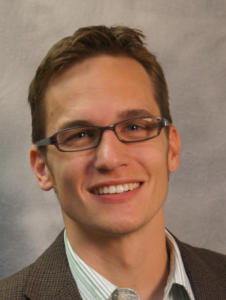Selection, Distributional Equity, & School Leadership:
An Exploration of Labor Market Preferences
Presenter: Peter Goff, Assistant Professor of Educational Leadership and Policy Analysis, University of Wisconsin—Madison
February 11, 2016
12:30-1:45pm
Gentry 144
Abstract: School leaders are a cornerstone of effective schools, yet we increasingly observe that high-needs schools are led by principals with fewer years of experience and education. Relative to teachers, principals are also disproportionately white and male. What are the mechanisms driving these distributional tendencies? What policy solutions are likely to resolve them? One limitation of existing research on labor markets is the common omission of the selection dynamics that occur as individuals select organizations and are in turn selected by these organizations for employment. This talk presents initial findings from three studies that use application data from over 300 Wisconsin districts to explore the nature of school leadership and the selection preferences of school leaders. The first and second studies analyze applicants’ professional statements via correlated topic modeling and automated text mining. What proportion of leadership candidates are instructional leaders? What proportion focuses on managerial leadership? Which types of leaders are most likely to apply to high-needs vacancies? These and other questions are presented in the findings of the first and second studies. The third study explores claims of gender and racial bias in the leadership labor market, finding that gender asymmetries in leadership relative to teaching are largely a function of application preferences of the labor supply. Avenues for future research and policy implications will be discussed.


 nversation with Representative Andy Fleischmann” this past November at the Storrs campus. As the chairman of the Education Committee of the Connecticut State Assembly, State Rep. Fleischmann (West Hartford) spoke about the future of education in Connecticut schools and how education policy research could better inform policy making in Hartford and beyond.
nversation with Representative Andy Fleischmann” this past November at the Storrs campus. As the chairman of the Education Committee of the Connecticut State Assembly, State Rep. Fleischmann (West Hartford) spoke about the future of education in Connecticut schools and how education policy research could better inform policy making in Hartford and beyond.